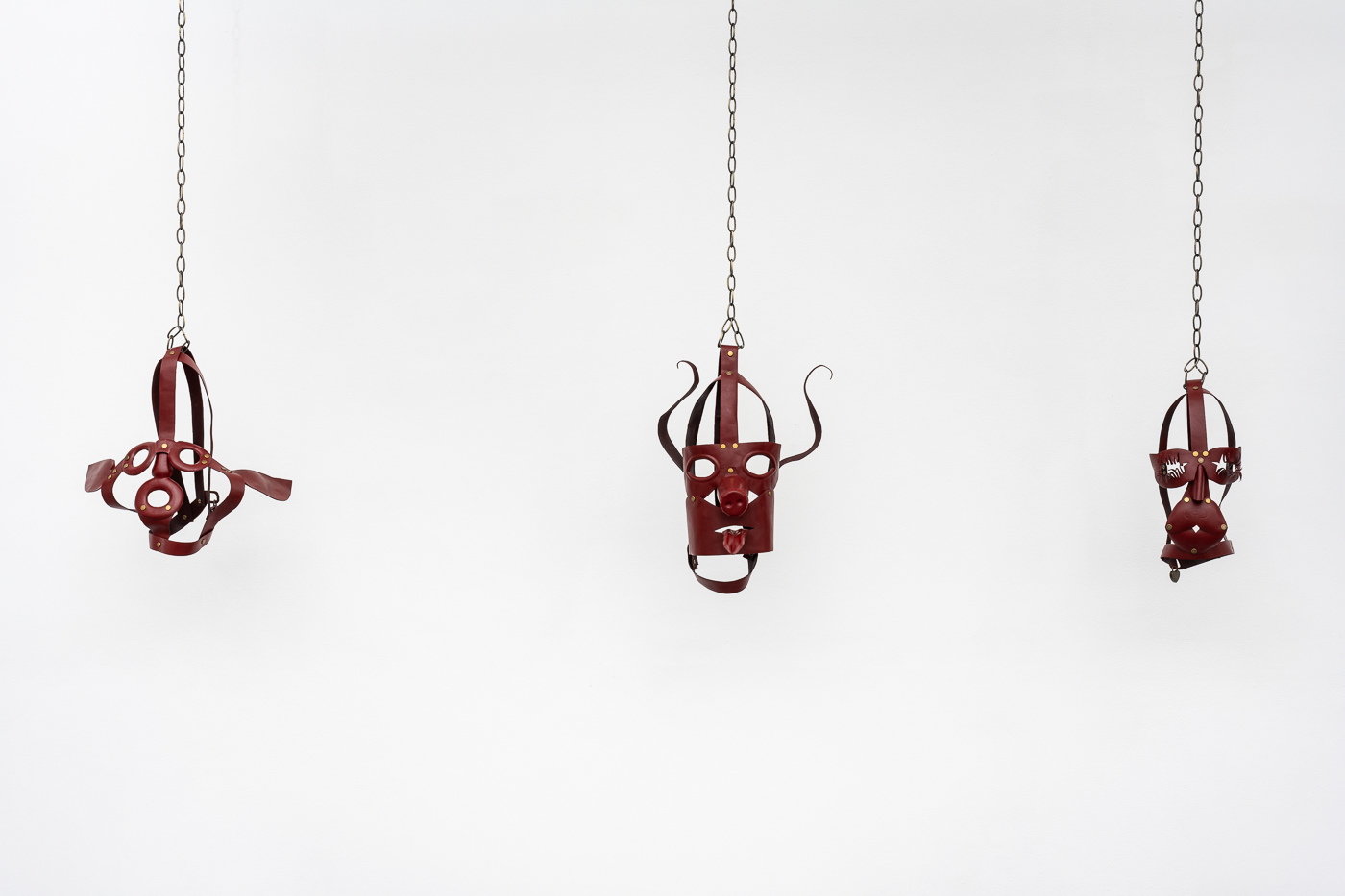
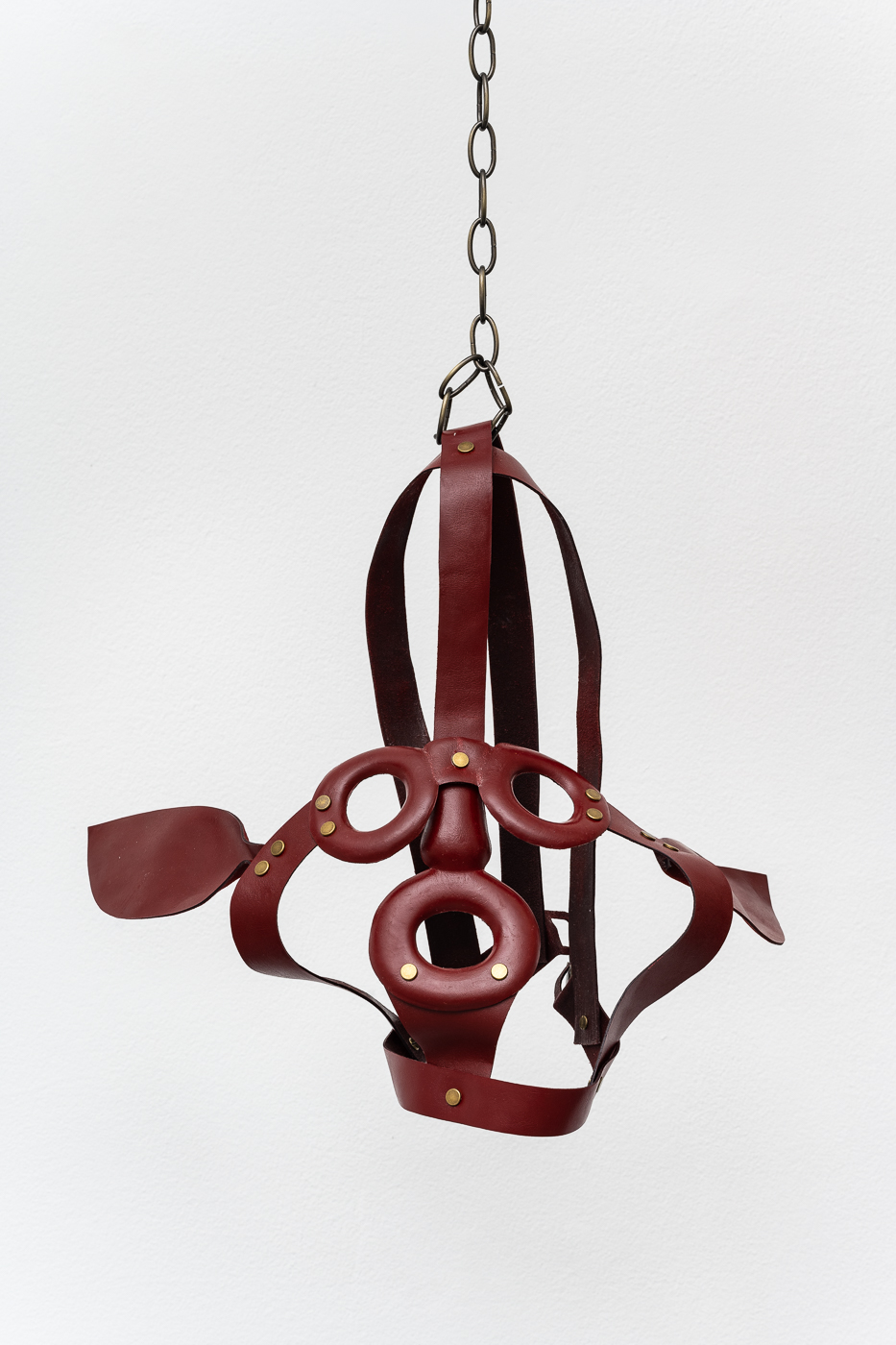
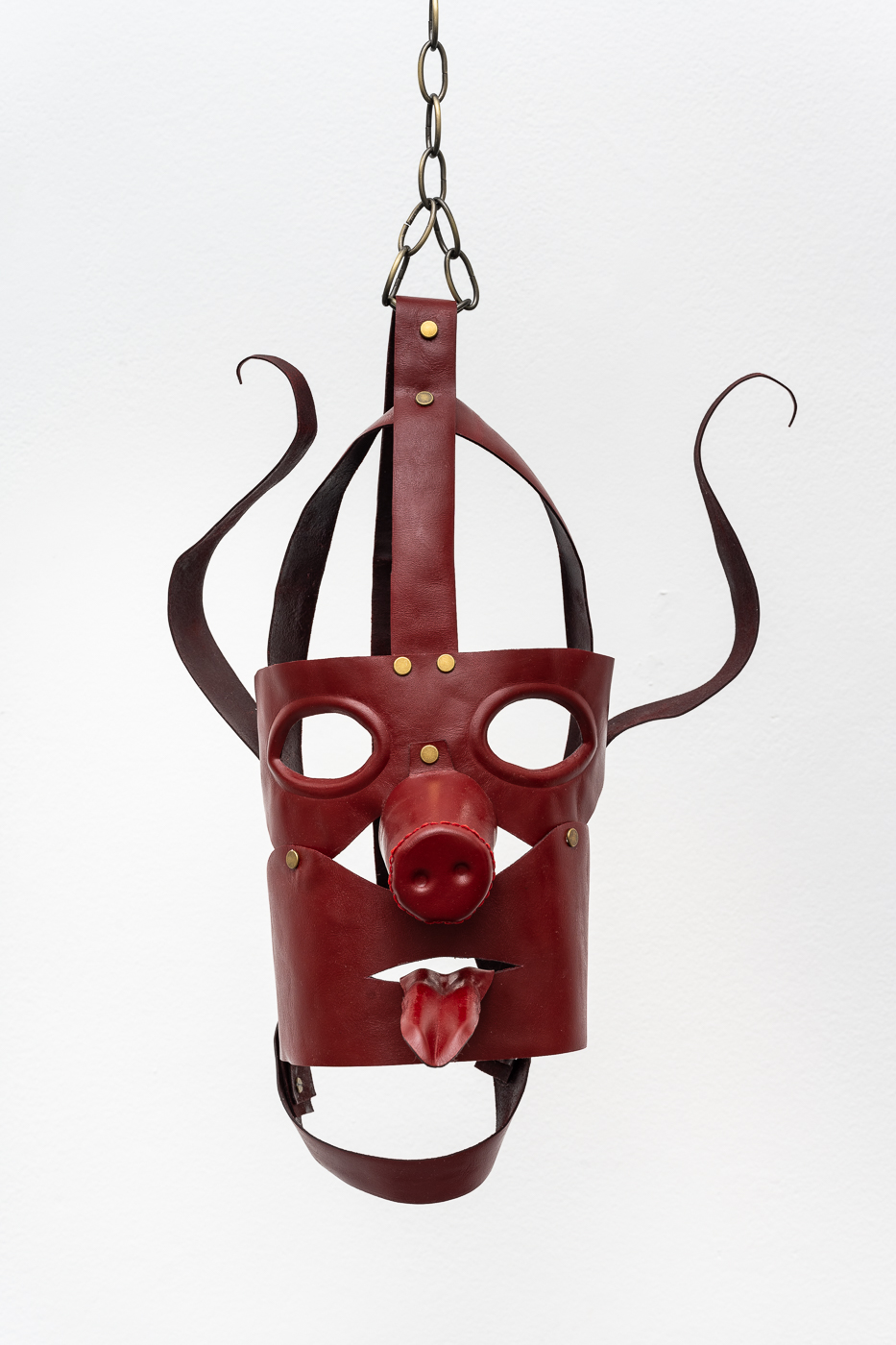
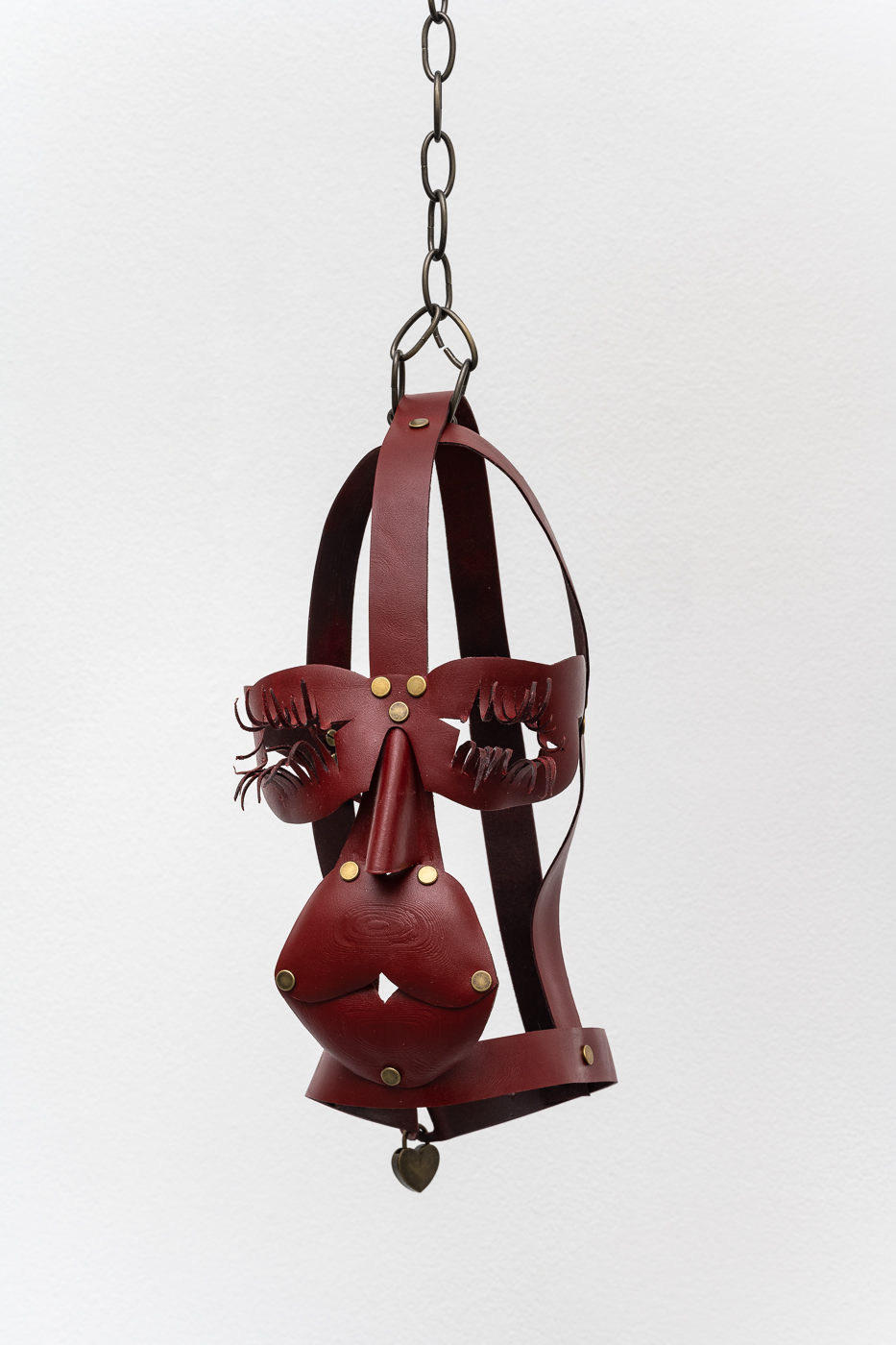
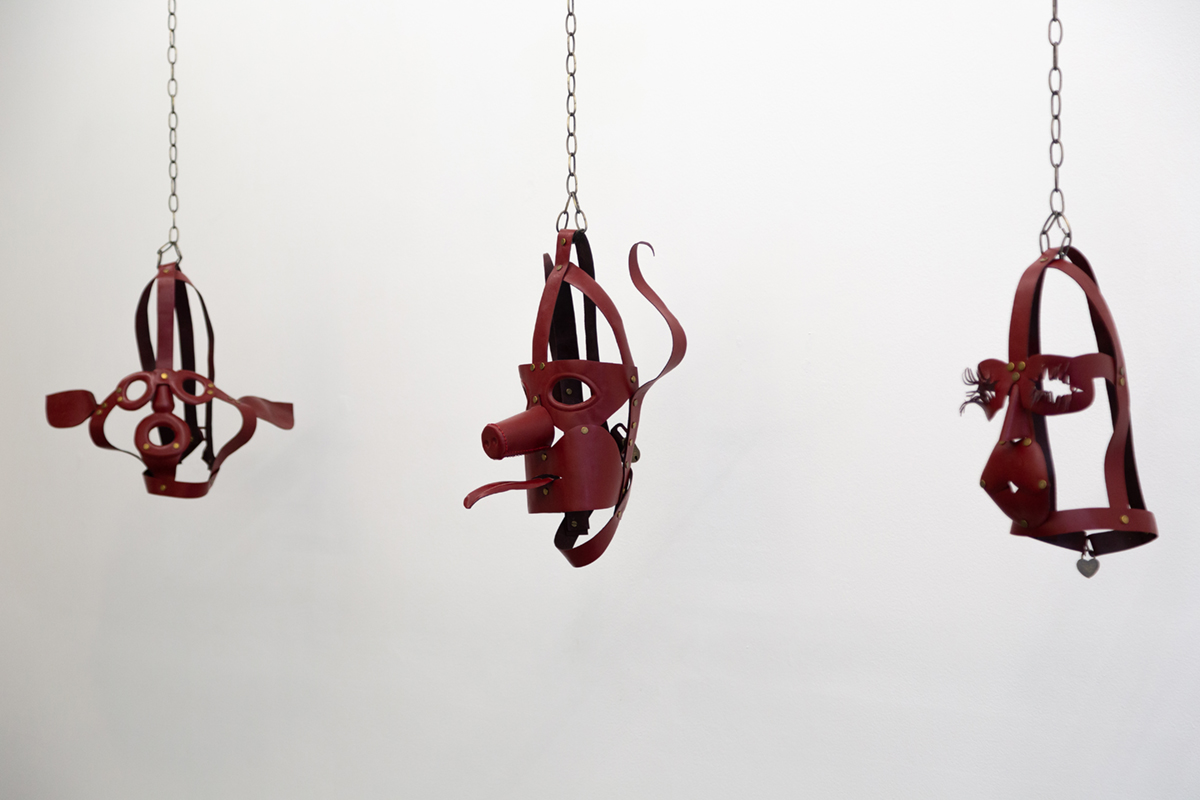
Muzzle*, Hold Thy Tongue, and Baddie
2023
Wet-Formed leather, Beeswax, Brass chain and rivets
Kupfer Gallery
*sold

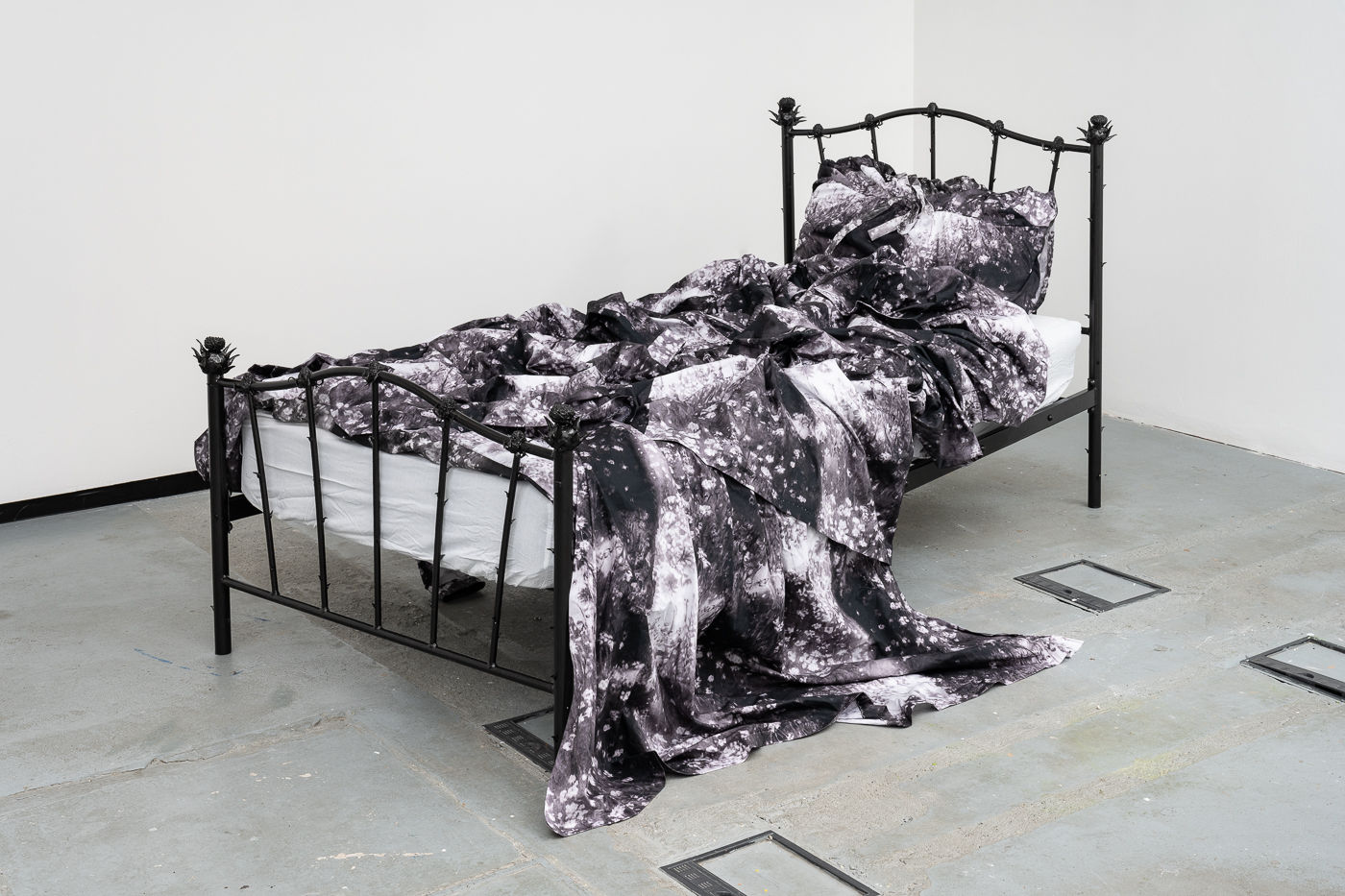
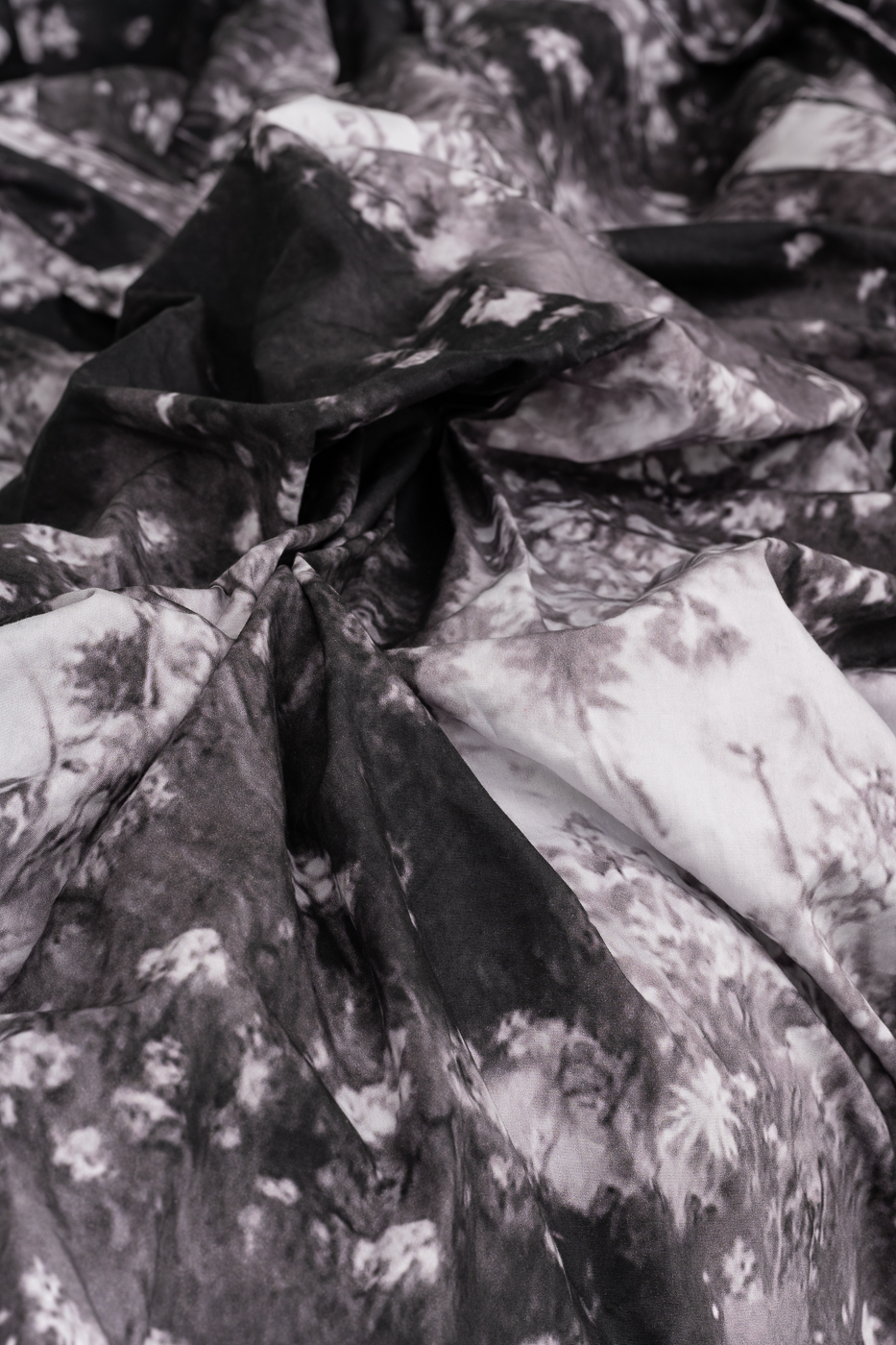

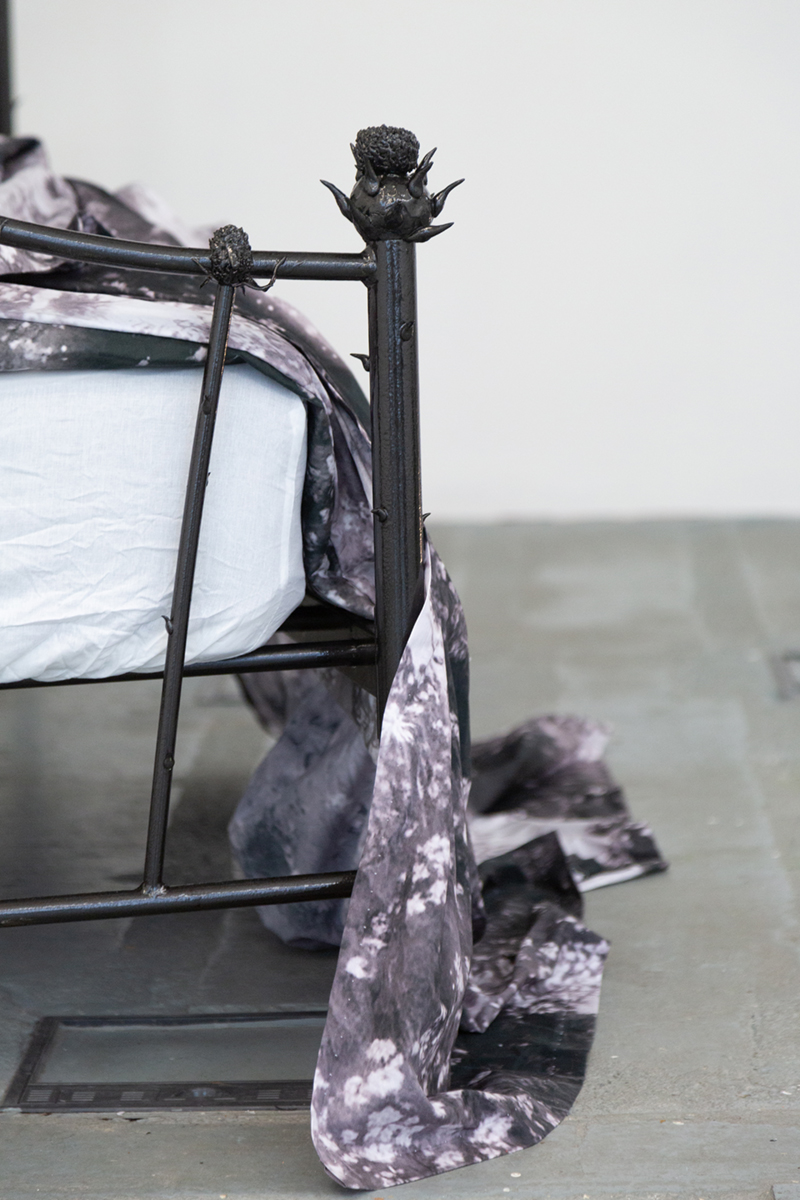
A Bed for Resting
2023
Painted metal and epoxy bed frame, Duvet and pillow cover made from custom-printed fabric reassembled victorian garb pieces
Kupfer Gallery
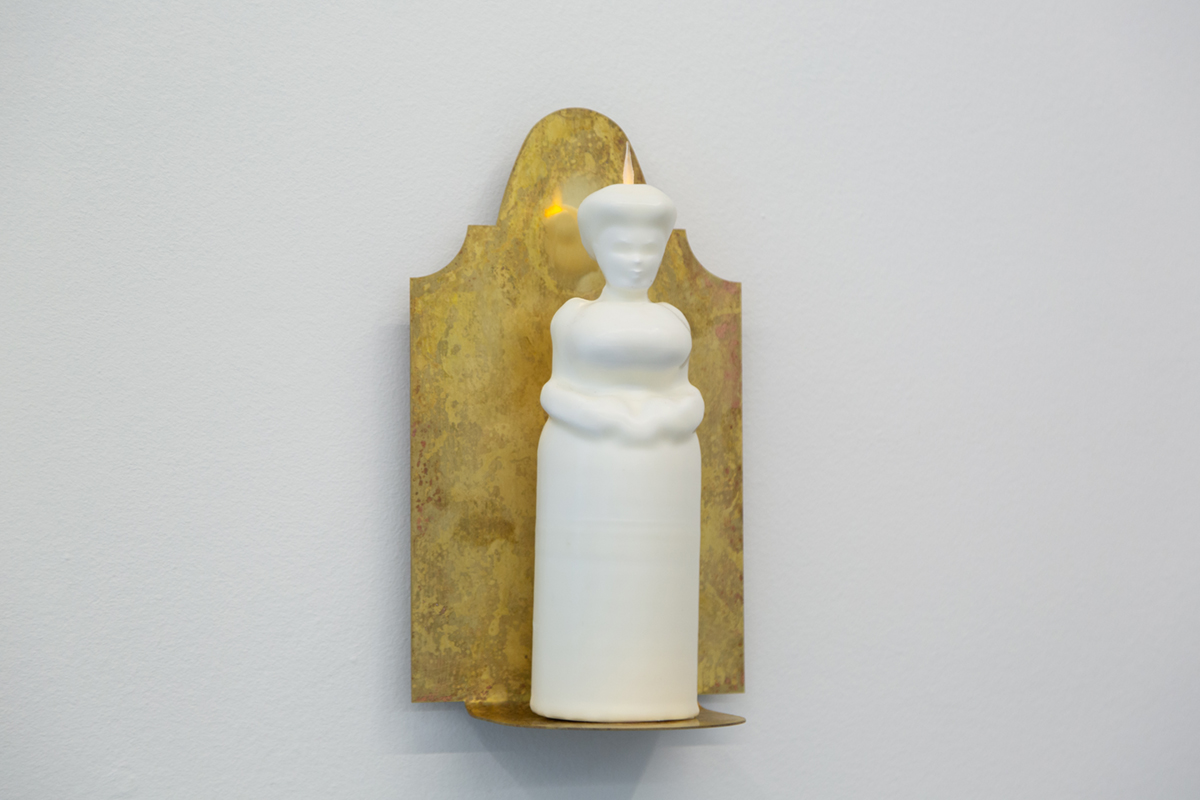
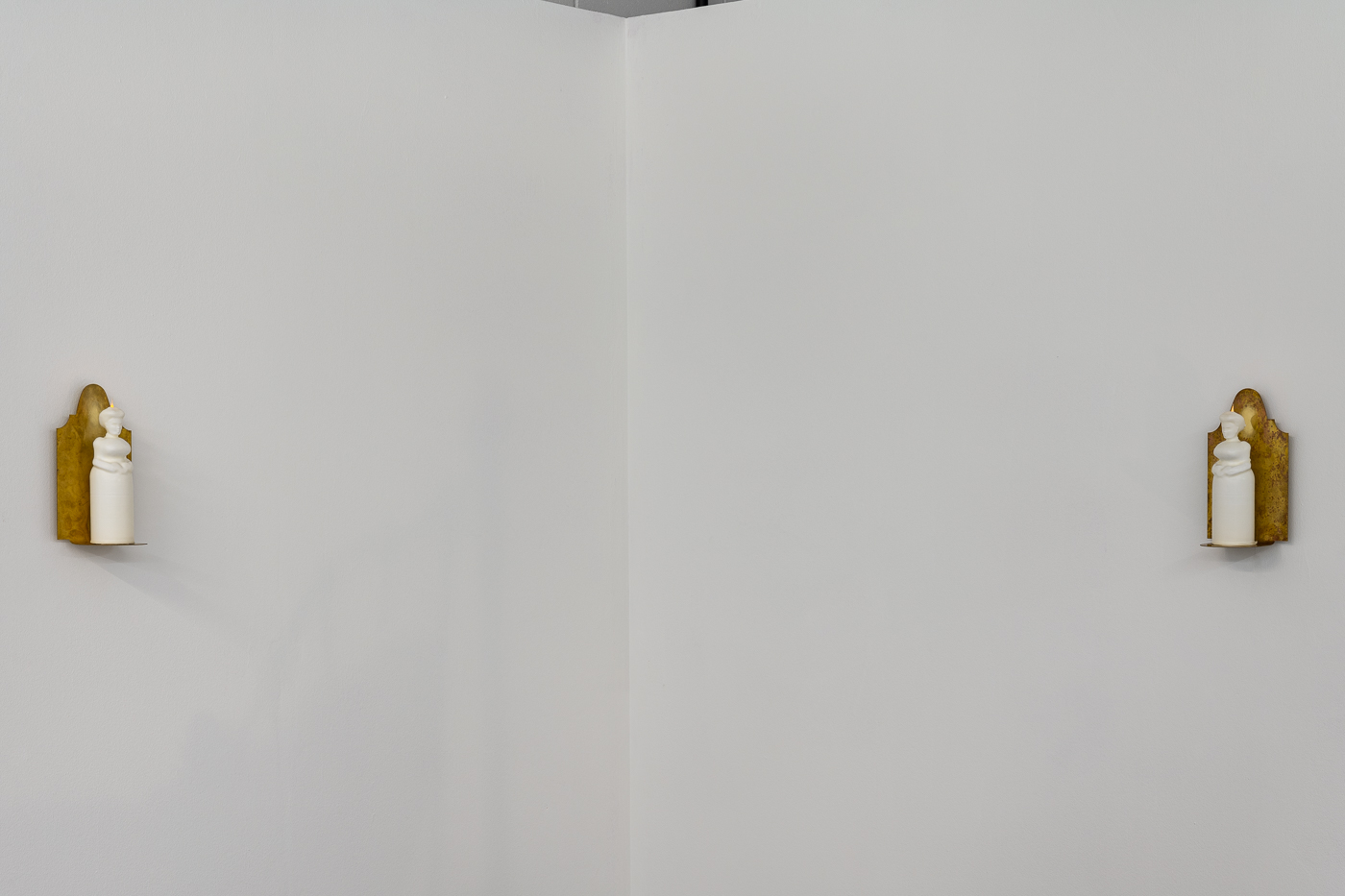
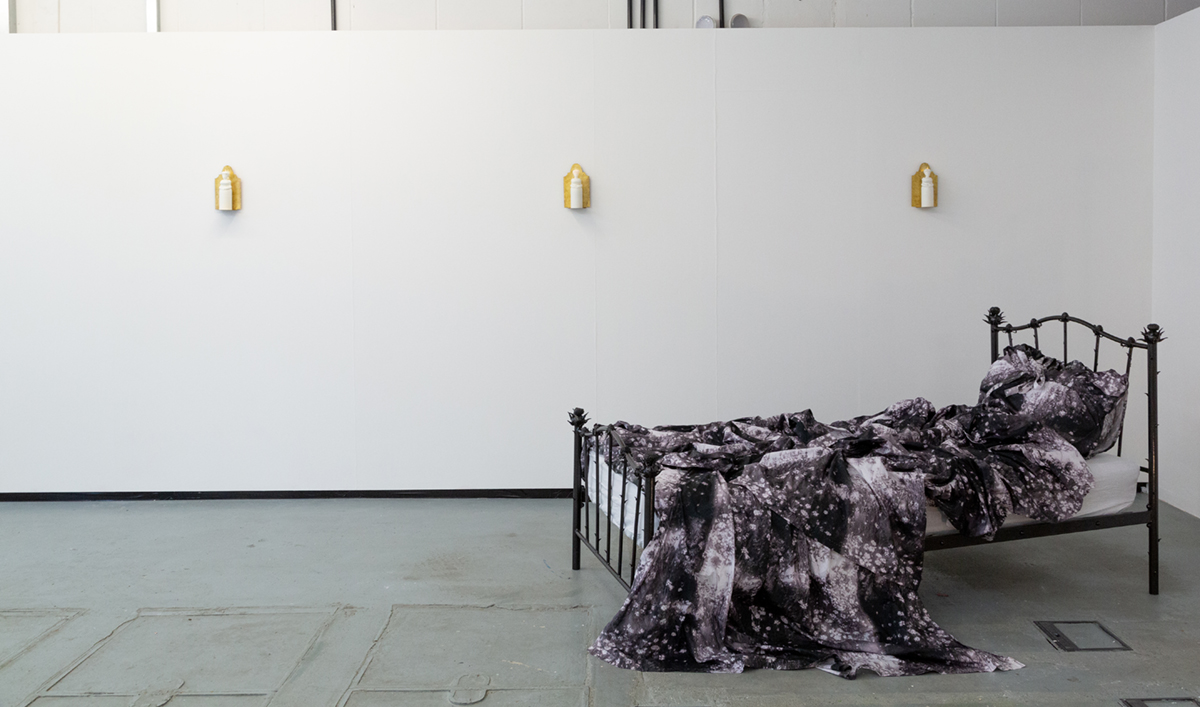
Sleeping Observers
2023
3D printed parts, LED circuit, Soy wax, Brass, Renaissance wax
Kupfer Gallery
Curation and Exhibition text by Sophie Argocs
It is impossible to move through the streets of London without being made aware of the violent history that cohabitates with us. It can be difficult to ignore, especially when the city’s association with crime history is a central selling point for curious tourists. Stories of famous killers, criminals, and cases persist in the pages of endless brochures, countless walking tour signs, gift shop memorabilia, and in places as obvious as certain museums. What is embedded in this history however, is not simply lore and entertainment, but real criminological truth about violence in its physical and systemic forms.
The Improbable Truth confronts London’s history of and relationship to crime. This exhibition reveals the roles our cultural institutions and industries play in shaping our perceptions of the world and brings to light how dynamics of gender, violence, and policing play out in the city’s streets. Three London-based artists; Anaïs Comer, Celeste McEvoy, and Maddy Plimmer, have created works in response to three examples of London’s particularly fetishistic obsession with crime; The Jack the Ripper Museum, The Clink, and The Sherlock Holmes Museum. In each visit to these museums, these artists have been asked to translate their emotional, intuitive, and analytical responses to the displays, collections and histories they encountered into new commissioned works of art seen before you in this exhibition. By doing so, existing narratives face being written, and new truths face being exposed.
Plimmer’s work, which takes a contemporary approach to key feminist theory and text, brings a new awareness to the language of gender and violence within museum objects. Her work for this exhibition, in particular Bite/Bitten, twists the familiar into forms which disarm in order to question systems of protection and control. Comer brings her careful attention to aesthetic history and her ability to enchant and transport audiences to this project. Comer’s large-scale sculpture works for this exhibition are particularly uncanny and haunting devices which grapple with issues of body and identity. McEvoy is a keen archaeologist in her practice. Her work in ceramics has always blended worlds by bringing together objects with precarious meanings. Her work for this exhibition is no different, having excavated the subject of crime history to produce a new ceramic composition which subverts expectations of space and setting, bringing new interpretations to the image of the crime scene.
In creating this exhibition, we oriented ourselves in the borough of Tower Hamlets because of its history as the site of Jack the Ripper’s Whitechapel murders, which serve as an entryway into discourse about the dissemination of local history and its impact. By analysing The Jack the Ripper Museum through a feminist lens, we uncovered patterns in the way female victims of violent crimes become subjects for scrutiny and sexualisation and their trauma fetishised and exploited. We later applied a criminological approach to The Clink, by exploring how preconceived ideas of criminality are implicitly tied to social bias, and how we as citizens are positioned in relation to the law and police. By taking our combined artistic knowledge to The Sherlock Holmes Museum, we uncovered how the aesthetics of historical crime dangerously merge real violence and systemic issues with fiction, and create a false sense of the reality which surrounds us in this city. The exhibition’s artworks serve as mirrors to reflect these institutions’ roles in promoting real and fictionalized dramas that not only mitigate the impact of trauma, but also contribute to a culture of misogyny and sexism that continues to do harm. Not only does this show explore these museum’s representations of crime and gender, but it uses these spaces, and their local contexts as springboards to trigger discussions of problems with crime and gender in contemporary London.
The Improbable Truth seeks to generate new critical discourse about London’s treatment of its history of crime. The goal of this exhibition is to ask Londoners, and all those who venture here, to think deeper about this history and association with crime and how it impacts the way we live and navigate this city today. Above all, this exhibition seeks to acknowledge the experiences of those who traverse this city’s museums, streets, and public transport. We ask audiences to remember that “when you have eliminated the impossible, whatever remains, however improbable, must be the truth” (Sherlock Holmes.)